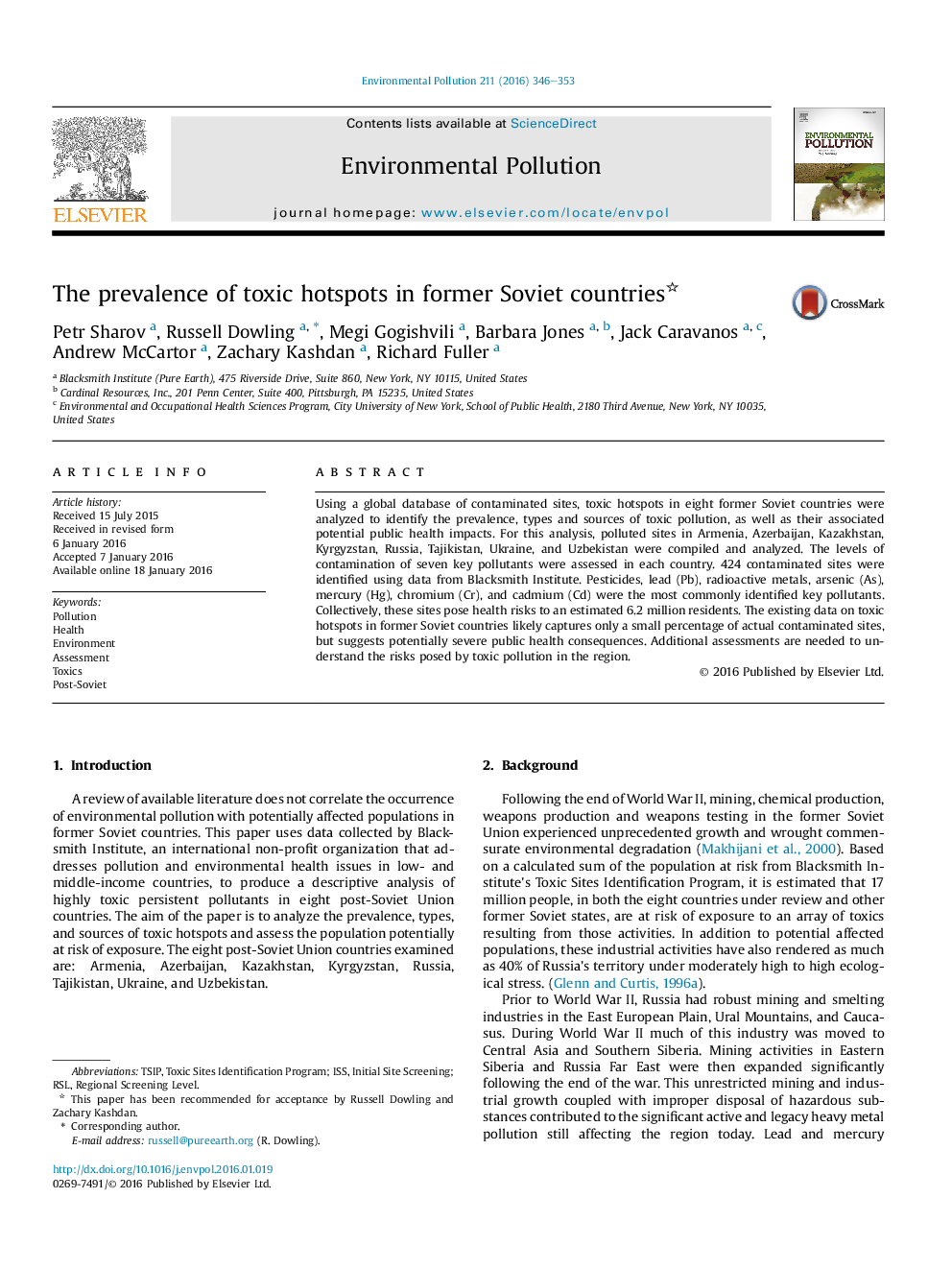| کد مقاله | کد نشریه | سال انتشار | مقاله انگلیسی | نسخه تمام متن |
|---|---|---|---|---|
| 6315540 | 1619162 | 2016 | 8 صفحه PDF | دانلود رایگان |
- Pollution in 8 former Soviet countries poses a health risk to 6.2 million residents.
- The most commonly found key pollutants are pesticides, lead, arsenic, and cadmium.
- The majority of sites can be traced to Soviet legacy pollution.
Using a global database of contaminated sites, toxic hotspots in eight former Soviet countries were analyzed to identify the prevalence, types and sources of toxic pollution, as well as their associated potential public health impacts. For this analysis, polluted sites in Armenia, Azerbaijan, Kazakhstan, Kyrgyzstan, Russia, Tajikistan, Ukraine, and Uzbekistan were compiled and analyzed. The levels of contamination of seven key pollutants were assessed in each country. 424 contaminated sites were identified using data from Blacksmith Institute. Pesticides, lead (Pb), radioactive metals, arsenic (As), mercury (Hg), chromium (Cr), and cadmium (Cd) were the most commonly identified key pollutants. Collectively, these sites pose health risks to an estimated 6.2 million residents. The existing data on toxic hotspots in former Soviet countries likely captures only a small percentage of actual contaminated sites, but suggests potentially severe public health consequences. Additional assessments are needed to understand the risks posed by toxic pollution in the region.
Journal: Environmental Pollution - Volume 211, April 2016, Pages 346-353
